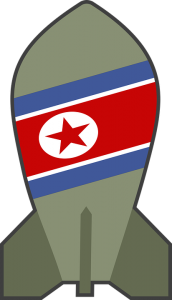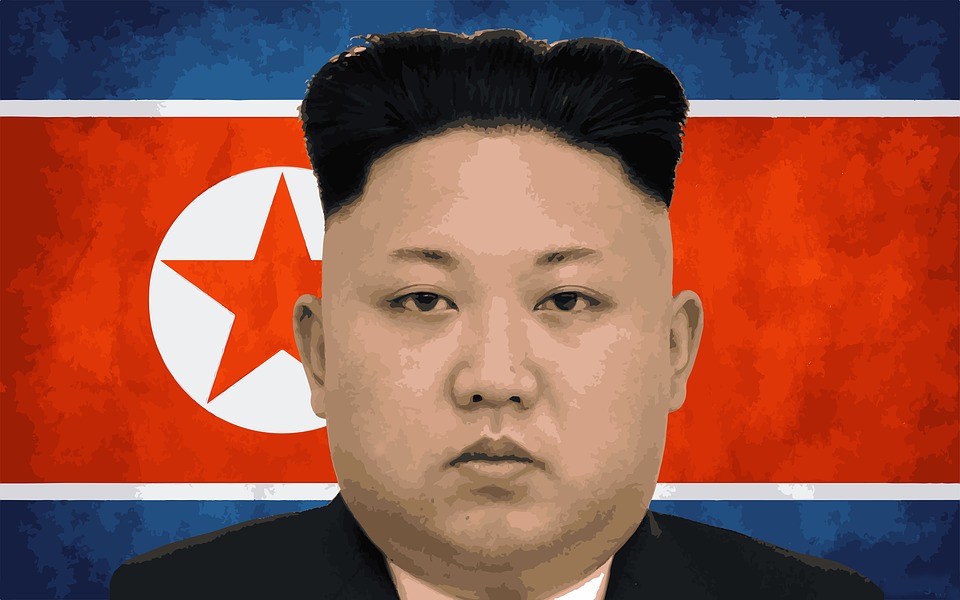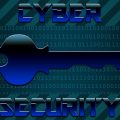De Faakto Intelligence Research Observatory
Weapons of Mass Destruction-What is Inside North Koreas Toolbox? An Open Source Intelligence Study
Methodology-OSINT research
Background & Analysis
North Korea has pursued weapons of mass destruction since 1954, as a course of establishing international prestige and military power. There are strategic rationales behind North Koreas quest for weapons of mass destruction (WMD). Motivations include; military deterrence, reunification of the Korean peninsula, regime survival, coercive diplomacy & leverage, domestic legitimacy, national pride and overcoming deficiencies of conventional domestic military forces. (The Heritage Foundation, 2019) Kim Jong-un has displayed his WMD program through nuclear warhead detonations, long range intercontinental ballistic missile testing, and the assassination of his own brother Kim Jong-nam with VX nerve agent.
North Korea is not party to several international WMD treaties. It has abandoned the Treaty on the Non-Proliferation of Nuclear Weapons and is non compliant with the Geneva Protocol and the Biological and Toxin Weapons Convention. (Nuclear Threat Initiative, 2019)
The Democratic Peoples Republic of Korea (DPRK) nuclear bomb programs master both hydrogen and atomic bomb technology. Intelligence estimates put North Koreas nuclear warhead count at sixty. Kim Jong-uns ballistic missile program is capable of delivering a miniaturized nuclear warhead anywhere within the continental USA.
North Korea has stockpiled an estimated 2500-5000 tons of chemical agents. Stocks include mustard, chlorine, sarin, soman, tabun and V-type chemical agents. All of North Koreas chemical agents are produced domestically in state chemical laboratories. DPRK has extensive chemical agent delivery systems. Chemical agents can be transported by artillery, rockets, drones, submarines, aircraft and Special Forces troops.
North Korea has been developing biological warfare capability since 1960. There are reports of biotechnical equipment acquisitions and biological agent testing on political prisoners. (NYT, 2019) South Korean intelligence suggests DPRK possesses causative agents for anthrax and smallpox. North Korean soldiers have tested positive for smallpox immunization, most likely indicating prophylaxis for biological warfare. The Central Intelligence Agency estimates that North Korea possesses the munitions infrastructure to transport biological agents. (CIA, 2003) Delivery systems include missiles, drones, aircraft, sprayers, human vectors and introduction of agents into water supplies. (Belfer Center, 2017)
North Korea has developed a full scope of WMD which has so far guaranteed Kim Jong-uns survival. Saddam Hussein & Muammar Gaddafi surrendered or dismantled their respective WMD programs. Relinquishing WMD stocks, Hussein & Gaddafi lost the coercive leverage needed for continued existence. Arguably, the survival of the Assad regime in Syria can be attributed in some part to chemical weapons. Kim Jong-un will continue to use WMD to compel change and advance his agenda. North Korean WMD programs may cultivate additional oppressive state regimes. Future threats could emanate from North Korean collaboration with outlier nations aspiring to WMD power & diplomacy.
Why has North Korea Acquired Weapons of Mass Destruction?
There are a multitude of reasons why North Korea would seek WMD with nuclear weapons capability,
- Deterrence of perceived aggression (Specifically the United States)
- Reunification of the Korean peninsula
- International prestige
- Coercive diplomacy
- Regime survival, by deterring allied attacks or retaliations in response to North Korean provocations
- Source of national pride, by achieving equal status with the United States
- Domestic legitimacy and international prestige for the leadership
- Tremendous military power, overcoming deficiencies in conventional forces to achieve reunification
- Formidable leverage for coercive diplomacy, to wrest concessions and benefits
- Undermining of the U.S.-South Korean alliance, by sowing doubt that Washington would come to Seoul’s defense once the American homeland is under nuclear threat (The Heritage Foundation, 2019)
Timeline-North Korea Weapons of Mass Destruction
1954
- DPRK-pursuit of chemical weapons begins (Nuclear Threat Initiative, 2019)
1970-1980
- North Korea initiates a ballistic missile program, Soviet Scud-type missiles acquired from Egypt and reverse-engineered (Nuclear Threat Initiative, 2019)
2002
- December-North Korea announced its intention to resume operation of nuclear facilities at Yongbyon (CIA, 2003)
- Late December-IAEA seals and monitoring equipment were removed and disabled, and IAEA inspectors expelled from the country (CNN, 2002)
2003
- January-North Korea announced its intention to withdraw from the Treaty on The Non-Proliferation of Nuclear Weapons (CIA, 2003)
- February-North Korea restarted its 5 Mwe reactor which could produce spent fuel rods containing plutonium (CIA, 2003)
- April-North Korea told US officials that it possessed nuclear weapons, and signal intent to reprocess the canned spent fuel from 1994 for more nuclear weapons (CIA, 2003)
- June-North Korea openly threatened to build a nuclear deterrent force (CIA, 2003)
2006
- North Korea conducts sophisticated nuclear tests (Nuclear Threat Initiative, 2019)
2014
- United Nations Human Rights Council reports from defectors-chemical weapons tested on prisoners & disabled persons (Nuclear Threat Initiative, 2019)
2017
- Throughout the year-North Korea tests several missiles demonstrating the rapid advances of its military technology (BBC, 2019)
- February-VX nerve agent used in the assassination of Kim Jong-nam, brother of Kim Jong-un
- September-North Korea conducted its largest nuclear test to date, at Punggye-ri test site (BBC, 2019)
Weapons of Mass Destruction-Treaties & North Korea (Nuclear Threat Initiative, 2019)
Treaty on the Non-Proliferation of Nuclear Weapons
- North Korea Withdraws-2003 (CIA, 2003)
- North Korea has since developed nuclear fission bombs
Comprehensive Nuclear-Test-Ban Treaty
- North Korea is not a signatory member
- North Korea has since conducted nuclear weapons testing
Chemical Weapons Convention
- North Korea is not a party to Chemical Weapons Convention
- North Korea is thought to have a large offensive chemical weapons program
Biological and Toxin Weapons Convention (BTWC)
- North Korea is a member state of BTWC
- North Korea is suspected of an offensive biological weapons capability, regardless of its membership in the BTWC
Geneva Protocol
- North Korea is a member of the Geneva Protocol
- North Korea is suspected of having offensive chemical & biological weapons capacity regardless

NUCLEAR WEAPONS & NORTH KOREA
Bomb Technology
Atomic Bombs
- Atomic bombs produce their explosive energy purely through a nuclear fission reaction
- An atomic explosion is a chain reaction in which atoms are split
- Particles collide with more atoms causing an exponentially growing chain reaction
- This process is called fission
- Colossal amounts of energy are released
- The most powerful fission explosion is achieved by using enriched uranium and plutonium atoms, which are unstable and radioactive (New Internationalist, 2008)
Hydrogen Bombs
- Hydrogen bombs are also known as H-bombs, thermonuclear bombs or fusion bombs
- H-bombs produce energy through nuclear fusion reactions
- Hydrogen bombs can be over a thousand times more powerful than fission bombs
- H-bombs work in a similar process to the sun, they work by using fission energy to compress and heat fusion fuel (New Internationalist, 2008)
What Nuclear Weapons Capability is North Korea Believed to Have Acquired?
Enriched Uranium & Plutonium
- North Korea generates useable plutonium and enriched uranium-it is estimated there is enough fissile material to arm 12 nuclear weapons (Nuclear Threat Initiative, 2019)
U.S. intelligence Agencies Estimate
- North Korea has up to 60 nuclear warheads
- North Koreas nuclear program is more advanced than previously thought (BBC, 2019)
Thermonuclear Bomb testing
- There is no longer any doubt about North Korea’s ability to build a powerful nuclear bomb (Washington Post, 2018)
- Thermonuclear testing produced an explosive yield, ranging from 100-370 kilotons (BBC, 2019)
- An explosive yield of 100 kilotons is six times more powerful than the bomb dropped on Hiroshima in 1945
Hydrogen Bomb
- Pyongyang claims to have developed a hydrogen bomb (BBC, 2019)
Nuclear Warhead
- American military intelligence believes that North Korea has successfully miniaturised a nuclear warhead to fit inside a missile (BBC, 2019)
North Koreas Nuclear Warhead Delivery Platforms
Intercontinental Ballistic Missile Systems
- North Korea is self-sufficient in developing and producing ballistic missiles
- North Korea has demonstrated a willingness to sell complete ballistic missile systems and components
- DPRK has enabled other states to acquire longer range ballistic missile capabilities (CIA, 2003)
North Korea has developed and tested long range intercontinental missile systems capable of striking anywhere in the continental United States (BBC, 2019)
- Hwasong-12 with a range of 4500 KM (Guam)
- Hwasong-14 with a range of 10,000 KM (New York)
- Hwasong-15 with a range of 13,000 KM (All of Continental USA)
CHEMICAL WEAPONS & NORTH KOREA
Chemical Weapons Technology
Blister Agents & Vesicants
- Blister agents (or vesicants) are chemical agents that cause victims to develop burns or blisters (vesicles) on their skin, as well as eyes, lungs, and airway irritation
Nerve Agents (Organophosphates)
- Nerve agents cause cholinergic syndrome disrupting nerve impulses, ultimately resulting in asphyxiation and cardiac arrest (Nuclear Threat Initiative, 2019)
Choking Agents
(May also be known as Lung or Pulmonary Agents)
- Choking agents attack lung tissue when inhaled, leading to respiratory failure
Blood Agents
- Blood agents are chemical agents that enter the victim’s blood and disrupt the body’s use of oxygen (Arms Control Association, 2019)
Riot Control Agents
- Facilitates temporary incapacitation of a person, irritation to the eyes, mouth, throat, lungs, and skin, constrict airways and cause nausea and vomiting (CDC, 2019)
What Chemical Weapons Capability is North Korea Believed to Have Acquired?
- Chemical agents North Korea is thought to possess-Mustard, chlorine, phosgene, sarin, soman, tabun and V-type chemical agents (The National Interest, 2019)
- South Korean Defense estimates DPRK has stockpiles of 2500 to 5000 tons of chemical agents (Nuclear Threat Initiative, 2019)
- DPRK possesses 12 facilities where raw chemicals, precursors, agents are produced & stored
- DPRK has six major storage depots for chemical weapons (Nuclear Threat Initiative, 2019)
- North Korea has various delivery means for chemical weapons (CIA, 2003)
North Korea Chemical Weapons Delivery Platforms
Artillery
- North Korean artillery is the most numerous chemical-weapons delivery system
- The majority of Pyongyang’s artillery would be capable of delivering chemical strikes
- North Korea has 5,100 multiple rocket launchers
- Rocket artillery of 122-millimeter or greater would be capable of delivering chemical weapons
- North Korea has 4,400 self-propelled artillery pieces (The National Interest, 2019)
- Field artillery of 152-millimeter or greater would be capable of firing chemical shells
Aircraft Delivery
North Korean aircraft that could carry out chemical strikes
- Eighteen Su-7BMK “Fitter” aircraft
- Thirty-two Su-25 “Frogfoot” aircraft (The National Interest, 2019)
Rockets and Missiles
North Korean Rockets & Missiles capable of chemical delivery
- Toksa/KN-02 Viper missiles (a derivative of the Russian SS-21 Scarab) with a range of 75 miles
- Toksas & Scud missiles-with a maximum range of 185 to 625 miles would need to be based close to the border
- No Dong missiles-with a range of 800 miles, makes it useful for deep strikes inside South Korea and Japan (The National Interest, 2019)
Special Forces
- North Korea’ Special Forces could be used to deliver chemical weapons in battle
- Special Forces could exploit the chaotic aftermath of a chemical attack (The National Interest, 2019)
Miscellaneous Delivery Methods
- Submarine deployed chemical weapons
- Drone delivered chemical attacks (The National Interest, 2019)
- Undiscovered tunnel systems to launch chemical attacks behind South Korean lines
BIOLOGICAL WEAPONS & NORTH KOREA
Biological Weapons Technology
What are Biological Weapons?
- Biological weapons use microorganisms and natural toxins to produce disease in humans, animals, or plants
- Biological weapons can be derived from: bacteria, viruses, rickettsia, biological toxins and fungi
- These agents can be deployed as biological weapons when paired with a delivery system, such as a missile or aerosol device (Nuclear Threat Initiative, 2019)
What Biological Weapons Capability is North Korea Believed to Have Acquired?
- North Korea has been pursuing biological warfare capability since the 1960s (CIA, 2003)
- Defectors from the North have described witnessing the testing of biological agents on political prisoners (NYT, 2019)
- North Korea’s soldiers are vaccinated against smallpox, suggesting either an offensive BW program or a biodefense precaution (Belfer Center, 2017)
- Pyongyang acquired dual-use biotechnical equipment, supplies, and reagents that could be used to support North Korea’s Biological Weapons efforts (CIA, 2003)
- South Korea’s Ministry of National Defense estimates that the DPRK possesses the causative agents of anthrax and smallpox (Nuclear Threat Initiative, 2019)
- North Korea could be involved in the research and production of more than a dozen biological agents, including the plague and hemorrhagic fevers (NYT, 2019)
- Biological Agents North Korea is suspected of developing includes; Bacillus anthracis (Anthrax), Clostridium botulinum (Botulism), Vibrio cholerae (Cholera), Bunyaviridae hantavirus (Korean Hemorrhagic Fever), Yersinia pestis (Plague), Variola (Smallpox), Salmonella typhi (Typhoid Fever), Coquillettidia fuscopennata (Yellow Fever), Shigella (Dysentery), Brucella (Brucellosis), Staphylococcus aureus (Staph), Rickettsia prowazekii (Typhus Fever), and T-2 mycotoxin (Alimentary Toxic Aleukia) (Belfer Center, 2017)
North Koreas Biological Weapons Delivery Platforms
- North Korea is believed to possess a munitions production infrastructure which has allowed it to weaponize Biological agents (CIA, 2003)
- North Korea’s choice of delivery vehicle is unknown and will likely be tailored to the strategic and tactical objectives for each weapon
- Missiles, drones, airplanes, sprayers, and human vectors are potential means of biological weapons (BW) delivery
- North Korea’s 240 mm Multiple Rocket Launcher (MRL) is also identified as a potential delivery vehicle for biological weapons
- Drones and airplanes using aerosol to disperse BW agents are also theoretically possible
- Another possibility is that North Korean agents will introduce BW into water supplies of major metropolitan areas (Belfer Center, 2017)
Resources
North Korea’s Less-Known Military Threat: Biological Weapons-The New York Times-Emily Baumgaertner & William J. Broad (2019) https://www.nytimes.com/2019/01/15/science/north-korea-biological-weapons.html
North Korea’s Biological Weapons Program, The Known and Unknown-Harvard Kennedy School, Belfer Center-Hyun-Kyung, Kim Elizabeth & Philipp Hattie Chung (2017) https://www.belfercenter.org/sites/default/files/2017-10/NK%20Bioweapons%20final.pdf
Forget About North Korea’s Nukes: Fear Kim’s Chemical Weapons-The National Interest-Kyle Mizokami (2019) https://nationalinterest.org/blog/buzz/forget-about-north-koreas-nukes-fear-kims-chemical-weapons-48152
Unclassified Report to Congress on the Acquisition of Technology Relating to Weapons of Mass Destruction and Advanced Conventional Munitions-U.S. Government, Central Intelligence Agency (2003) https://www.cia.gov/library/reports/archived-reports-1/jan_jun2003.htm#5
Nuclear Weapons-The Facts-New Internationalist (2008) https://newint.org/features/2008/06/01/nuclear-weapons-facts
Nuclear Threat Initiative-North Korea Overview (2019) https://www.nti.org/learn/countries/north-korea/
North Korea’s Missile and Nuclear Programme-BBC News (2019) https://www.bbc.com/news/world-asia-41174689
Case Definition: Vesicant (Mustards, Dimethyl Sulfate, and Lewisite)-Center for Disease Control & Prevention-U.S. Government (2019) https://emergency.cdc.gov/agent/vesicants/casedef.asp
Case Definition: Nerve Agents or Organophosphates- Center for Disease Control & Prevention-U.S. Government (2019) https://emergency.cdc.gov/agent/nerve/casedef.asp
Vesicants- Center for Disease Control & Prevention-U.S. Government (2019) https://emergency.cdc.gov/agent/vesicants/index.asp
Choking Agents- Center for Disease Control & Prevention-U.S. Government (2019) https://emergency.cdc.gov/agent/pulmonary/index.asp
Blood Agents- Center for Disease Control & Prevention-U.S. Government (2019) https://emergency.cdc.gov/agent/blood/index.asp
Riot Control Agent- Center for Disease Control & Prevention-U.S. Government (2019) https://emergency.cdc.gov/agent/riotcontrol/index.asp
Kim Jong-nam Murder Suspects Were Trained Assassins, Court Told-The Guardian & Reuters-(2019) https://www.theguardian.com/world/2018/jun/28/kim-jong-nam-suspects-trained-assassins-court-told
North Korea Expelling IAEA Inspectors-CNN World News (2002) http://edition.cnn.com/2002/WORLD/asiapcf/east/12/27/nkorea.expulsions/






